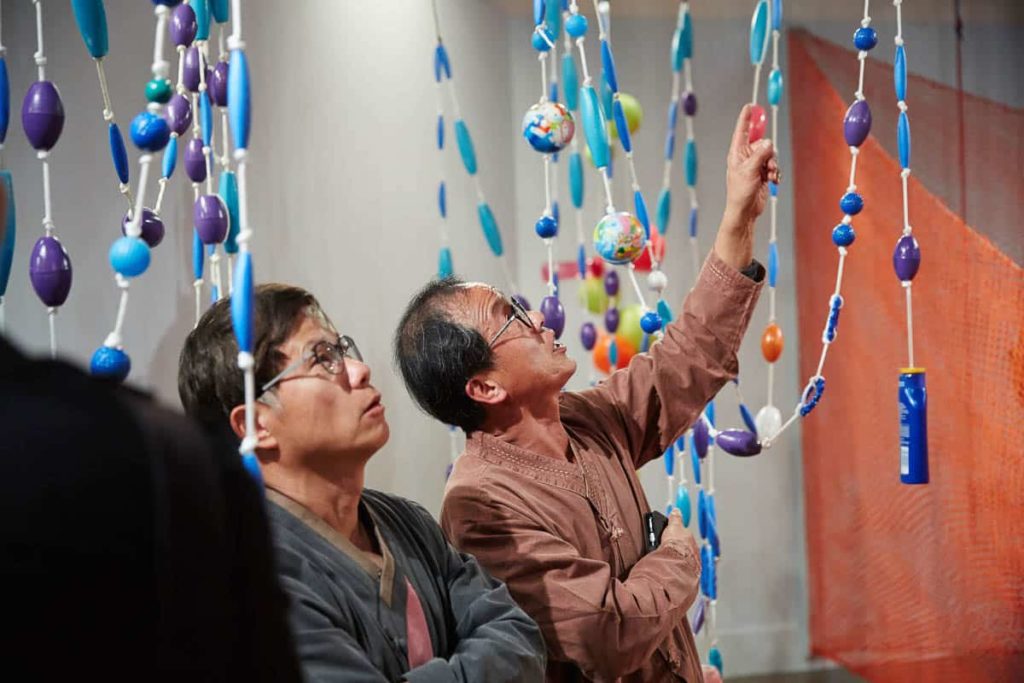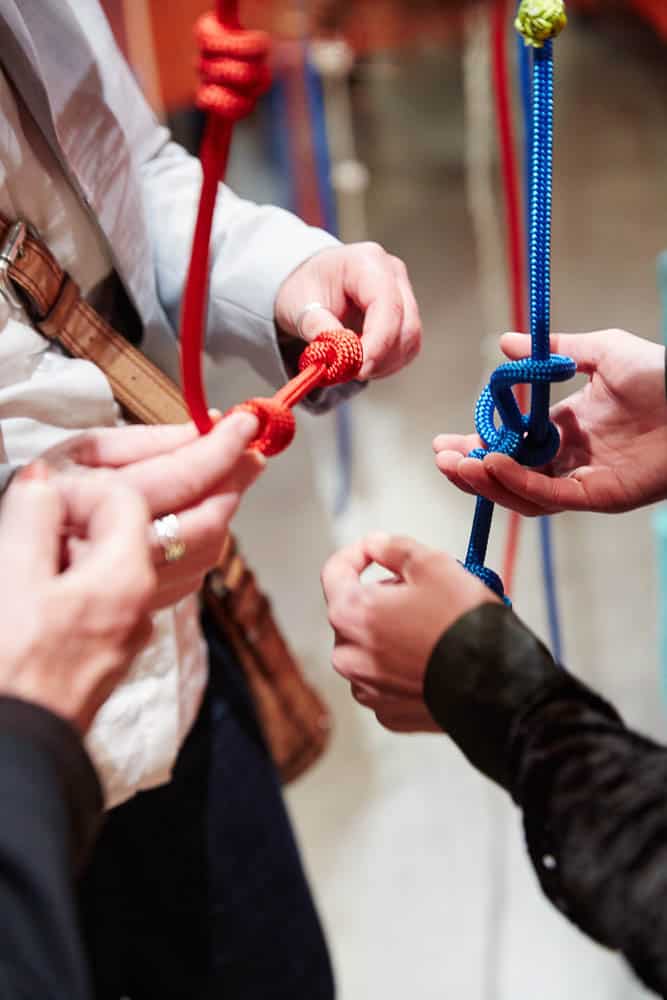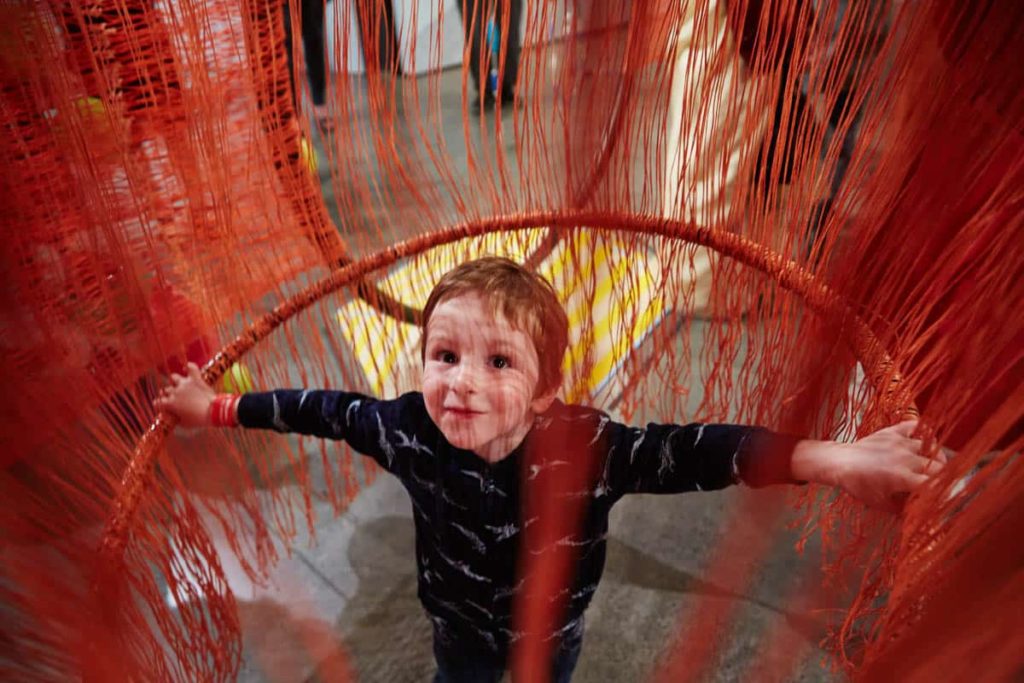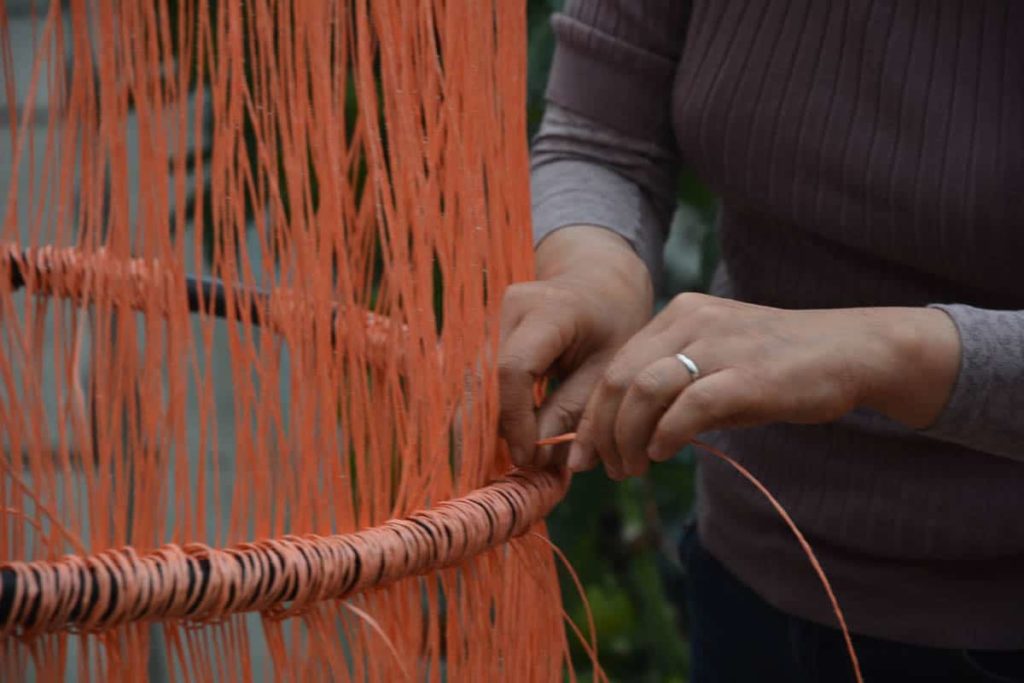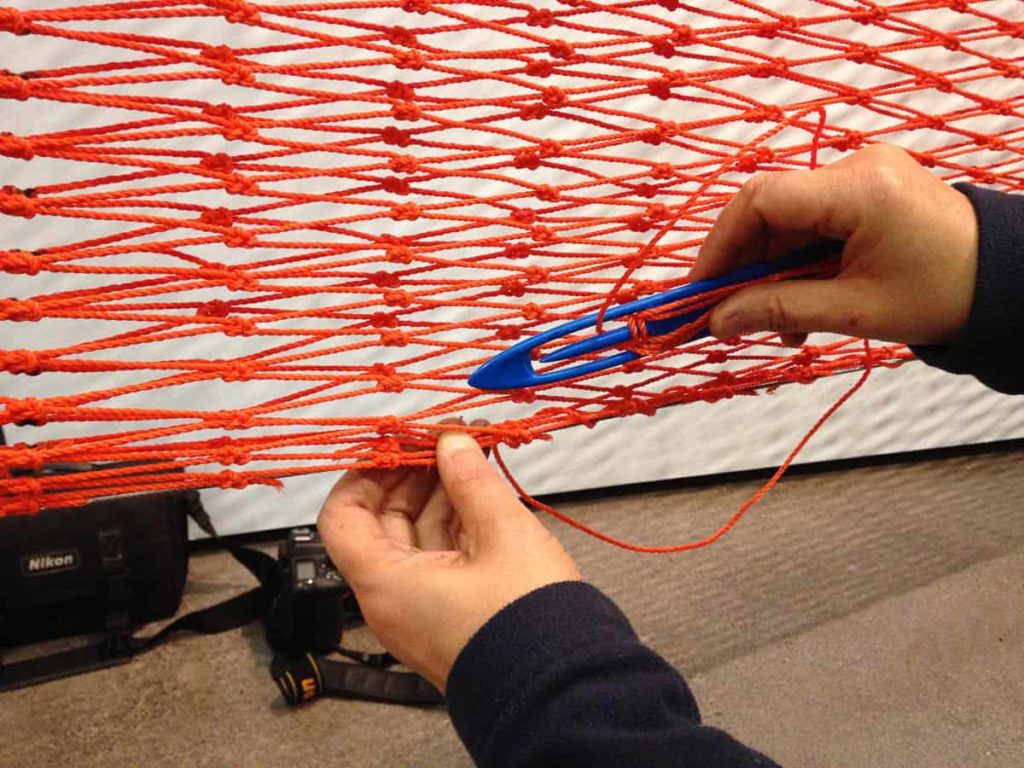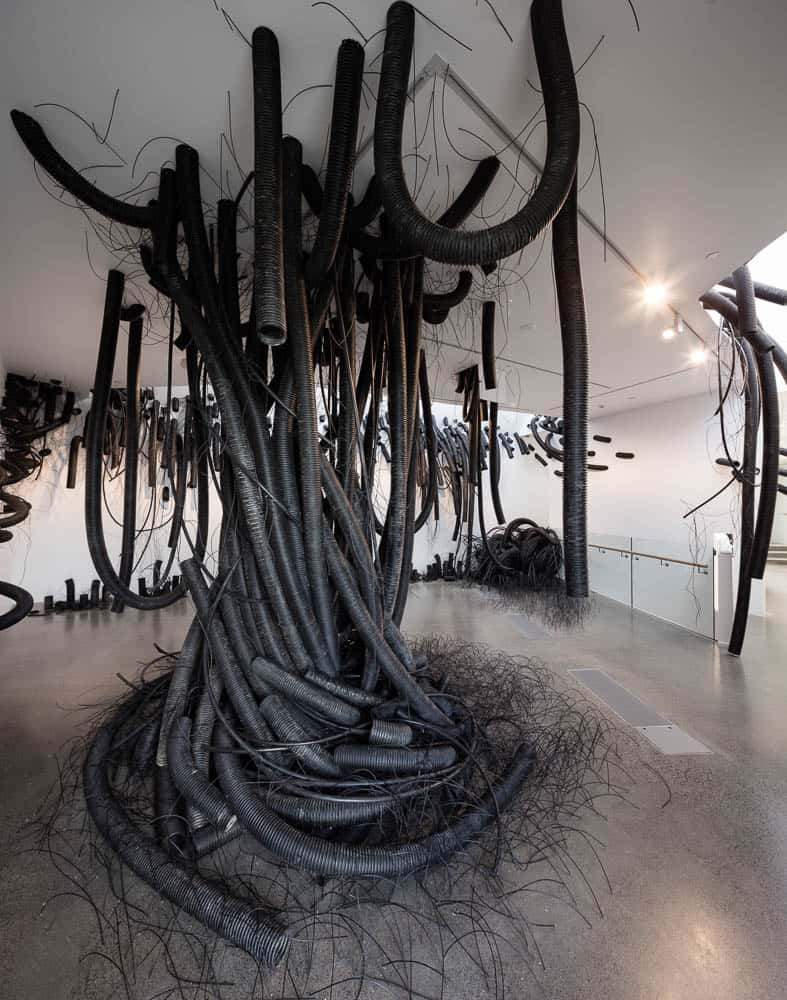- photo: James Yang
- photo: James Yang
- photo: James Yang
- photo: James Yang
- photo: James Yang
The title for the current exhibition at the New Zealand Maritime Museum Knot Touch plays on the typical request in museums and galleries for visitors to refrain from touching. The idea for the tactile installation created by Jae Kang began with a discussion around maritime knots and the desire to create a work that would offer all visitors—especially children and disabled people—sensory experience. This project was also inspired by the artist’s son, who has severe autism and is intellectually disabled. Jae notes:
I have never been able to take my son to galleries to see exhibitions because I know that he will touch the works.
At the Maritime Museum, we are interested in expanding the scope of what might traditionally fall under the term “maritime”. We see temporary art exhibitions as an opportunity to address a range of contemporary topics and a means of being able to connect to different audiences. For example, whereas the previous exhibition focused on refugees and immigration and provided a platform for sharing personal experiences, Knot Touch responds to the public desire for more accessible art in the galleries.
In the gallery, orange fishing net zig-zags across the floor creating four discrete areas that one enters by way of a ramp over a large hoop. The sections contain a range of knots, both functional and decorative. Initially, while the project seems to represent a departure from the artist’s recent work, it continues the practice of meticulous planning and an intensive “making” process that characterises other installations. Some of the materials are also the same and link to Jae’s occupation as a commercial tomato grower. The four black hoops made from recycled plastic irrigation pipe and the light synthetic twine have been removed from the horticultural environment and transported into the gallery. In the greenhouse, Kang uses a series of no-frills knots to secure thousands of plants to vertical lines spaced out row after row. She views this repetitive physical activity as meditative and the gestures as small, but valuable units of labour, each contributing to a larger whole. A small grouping of these “lines” are replicated in a section of the installation of 70 knotted lengths of rope.
Next to the collection of knotted ropes float eight, mostly orange, jellyfish-like sculptures inspired by Māori eel traps (hīnaki). Standing inside one of these suspended sculptures, it’s possible to feel both a sense of entrapment and freedom. In the next area, a selection of coloured fishing floats and buoys have been strung onto rope-like giant necklaces. Finally, a group of monkey-fist knots ranging from tiny to very large are arranged on the walls and floor.
Adjacent to the installation is an area containing knots from the Museum’s collection and the opportunity to get some practice learning how to tie some common knots. Jeweller, Mia Straka created an interactive area containing a sacred geometry design and also a wall with a rope ladder installation.
A trained art teacher, Jae Kang is a Korean-born, sculptor and painter who has lived in Auckland for over 18 years. In the past couple of years, she has exhibited in galleries around Auckland and Tauranga and this year she received an award for her drawing: the Parkin Drawing Prize.
Author
 Jaqui Knowles lives and works in Auckland. She has been Exhibitions Curator at the New Zealand Maritime Museum since 2015. Currently, she is in discussion with several artists about upcoming projects. “Allowing plenty of time to develop concepts usually results in much stronger exhibitions.”
Jaqui Knowles lives and works in Auckland. She has been Exhibitions Curator at the New Zealand Maritime Museum since 2015. Currently, she is in discussion with several artists about upcoming projects. “Allowing plenty of time to develop concepts usually results in much stronger exhibitions.”

